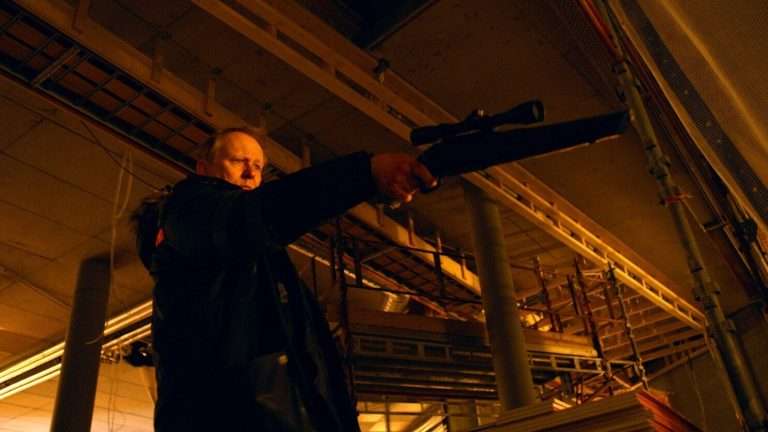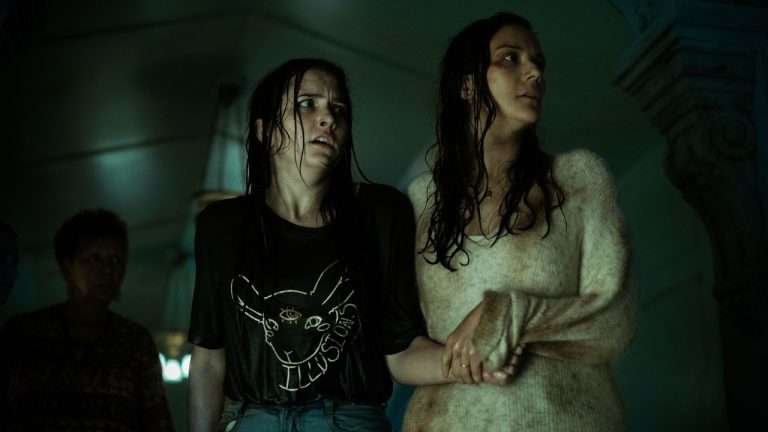Mohammad Rasoulouf’s tenth directorial and his eighth feature film could also be characterized as one of his more incisive movies, wherein he directly lambasts the Iranian government. “The Seed of the Sacred Fig” chooses to shift the lens directly within the heart of the theocratic administration, to highlight the frailty and rot within a family as ideological and moral differences threaten to rip the family apart.
The Seed of the Sacred Fig (2024) Plot Summary & Movie Synopsis:
Iman’s promotion and the paranoia of the job
An honest lawyer, devout to his faith and in his belief in the government, Iman lives with his wife Namjeh and his two daughters, Rezvan and Sara. The promotion entails him as an investigating judge working directly under the Revolutionary Court in Tehran.
The Revolutionary Court encompasses almost all of the offenses that would risk the internal and external health of the country or the ideology at large. From large-scale offenses like smuggling or espionage to inciting slander against the government, all come under the purview of this Revolutionary Court. Unlike regular judiciary, the trials aren’t public, not presided over by any jury but rather by a singular judge, and the details of the trial would only be disbursed at the discretion of the government.
Iman, while having been promoted to a higher position and awarded substantial pay along with a larger apartment, soon learns that his appointment as an investigating judge came not due to his judicial talents but due to his devotion to the administration, which would make him the perfect hand in passing death sentences irrespective of evidence signifying such an outcome. At least that would be why his superior Ghaderi would order him to sign these death sentences. That in turn would entail him to remain anonymous as well as restrict information from his family members themselves.
The dinner that night, ostensibly a means to celebrate Iman’s promotion, rather results in Iman ordering his two teenage daughters to stay off social media, as well as ensuring that news of his promotion or position within the government remains restricted within the four walls of their apartment. As for protection, Iman is assigned a handgun, which Iman nervously handles, and his wife too takes note of that gingerly methodology.
The Attack on Sadaf
Rasoulof, while not explicitly referring to the Girls of Englehab Protests (hijab protest), would be referring to such protest, or more importantly, the 2022 protests against the death of Mahsa Amini in police custody, which would result in widespread demonstrations. The increasing demonstrations led to Iman indiscriminately signing off death warrants at his office. The news media vociferously reports against the protestors, painting them as rebels against a just system; both Rezvan and Sana would be following the actual, unvarnished news on Instagram, on reels whereby the film would cut to the real-life footage of the protests.
The relationship between the free-spirited and independent young women and the devout Najmeh had been initially strained and somewhat challenged by Rezvan bringing an old college friend, Sadaf, who had just shifted to Tehran and was looking for a place to live other than her dormitory. The paranoia of Iman’s job entailed Najmeh not entertaining any guests under her supervision.
As a result, she would look at Sadaf as one of the personifications of the outside world affecting her daughters in strange ways, leading them to act out against her family. This, however, reaches a fever pitch when, in the middle of the protestations, Rezvan and Sadaf find themselves in the middle of the rally while going to attend college, and Sadaf is shot in the face by a buckshot.
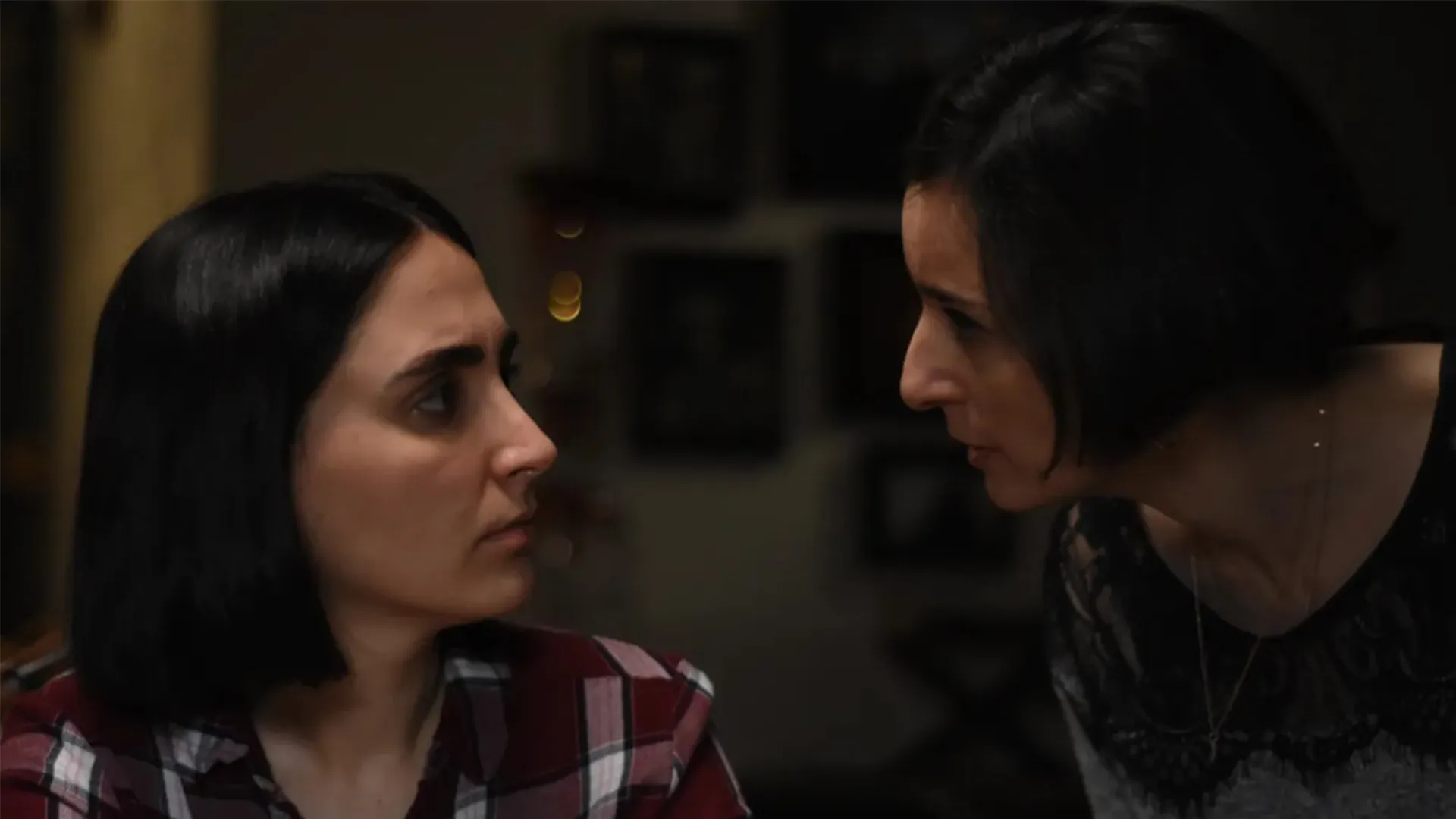
Both Najmeh and Sana would return home as Sana’s school would be closed due to the protests. When Najmeh is convinced by Sana to buy some emergency groceries, Sana helps Rezvan sneak in the injured Sadaf, one eye sewed shut and her face blood-caked due to the buckshot wound. The girls would be hesitant to bring Sadaf to the hospital because of their father’s profession, and thus when Najmeh comes home, she is forced to unwillingly provide first aid to Sadaf but refuses to house Sadaf for protection. Instead, Sadaf would disguise herself and return to her dormitory at the college. A short while later, she would be arrested.
The Disappearance of Iman’s Gun
“The Seed of the Sacred Fig” ostensibly shines a light on a family on the side of the regime, with their members working directly for the regime and its ideals, and how their loyalty either wavers or their mental state becomes frail. While the disappearance of the gun could be pinpointed as the obvious mental break, Iman’s existential dilemma would begin from the moment of his promotion, where the responsibility of signing un-examined death sentences would begin to weigh on his soul, and Iman, to Rasoulouf’s credit, doesn’t have the self-awareness to realize that he is on the side of the oppressor.
His daughters, on the other hand, definitely start to skew against their father and the regime that he represents, with the news churned out by the media clearly being labeled as lies and expressed out loud at the dinner table much to the chagrin of Iman. When directly confronted with her father’s statement that he knows better because he has worked within the regime for years, Rezvan rebuts without a twitch in her voice that her father doesn’t know better. Because he is on the inside, he believes in it, and he wants to preserve it at all costs.
Thus, when his gun suddenly disappears from the bedside drawer, he becomes suspicious of the women in his family and believes one of them has stolen it out of spite. Iman’s fear, as well as Gadhieri’s, is not just that Iman could be sentenced to up to three years in prison, but that the damage to his reputation would be irreparable. It would further affect his future promotion. Realizing that his back is against the wall and convinced by his boss, he forces his wife and daughters to be sent for interrogation by Alireza, one of the best interrogators working under the regime.
The close friendship between Iman and Alireza’s families doesn’t come to the aid of Najmeh, Rezvan, or Sana. Namjeh is directly questioned by Alireza, with much probing. Meanwhile, Rezvan and Sana would be interrogated in separate rooms, with their eyes blindfolded and only allowing limited vision for them to write down answers to the questions asked. Even within that limited vision, Sana notices a black obsidian ring adorning the fingers of one of the interrogators. She soon realizes the identity of that interrogator as she sees the ring on her father’s hand while her family is driven home. Iman interrogates his daughters himself, and Sana realizes it.
When the interrogation doesn’t yield fruitful results, both Iman and Najmeh try to appeal to their daughters. For Rezvan, they play good cop, and bad cop, with Iman playing the good cop and reminding her of the love and respect she already has, while Najmeh provokes and even slaps her. However, it only leads to her breaking down and begging to be left alone. For Sana, they try a different tact by ensnaring her with promises of letting her dye her hair or paint her nails, but to no avail. Sana doesn’t rat on Rezvan, perhaps because she knows that her sister isn’t responsible for the theft of the gun.
The Car ride to the mountains
Back when Najmeh had been searching for Sadaf’s whereabouts, she had requested the aid of Alireza’s wife. During that conversation, Alireza had warned about a “group of unscrupulous people” who had been posting contact information about all the interrogators and members of the regime on social media. This had been the fear that had guided both Iman and Ghadieri into maintaining the anonymity of their profession in the first place, as well as the reason for which the gun had been assigned.
But with Iman’s contact information now being posted on social media, his paranoia reaches a fever pitch. Under his boss’ orders, he decides to write a letter to his boss requesting official housing before dropping off the grid with his family until the situation settles. Ghadieri gives him one of his extra guns for protection. Iman, upon reaching home, goes about protecting his digital footprint by attaching tapes over the phone cameras of his daughter’s phones and noting down their passcodes so that he could gain access. Once that’s done, Iman makes the key decision of driving his family to his childhood home in the mountains.
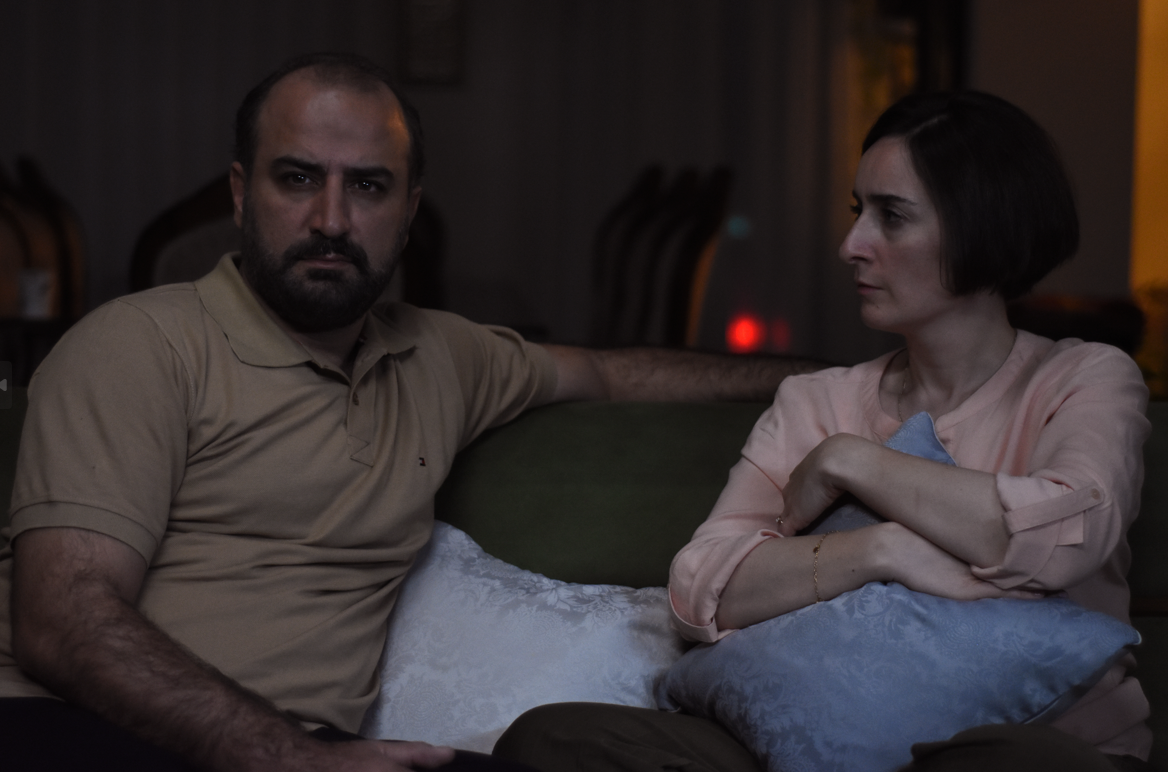
During that car ride, the family encounters a couple. One-half of the couple recognizes him while he is restocking at a fuel pump, and Iman’s paranoia governs his action in which he manages to drive around and come up behind the couple’s car, driving them off the road. When the couple threatens to record these instances and upload them on social media, Sana informs her father that their cells currently don’t have a network.
Bolstered by the revelation of that empty threat, Iman threatens the couple with his now-newfound firearm. Unbeknownst to him, his daughters, now disillusioned with their father, have slowly started to shrink away. Much to Rezvan’s horror, Sana reveals that she had been the one who had stolen the gun and that she currently has it in her possession.
The Seed of the Sacred Fig (2024) Movie Ending Explained:
Why does Iman chase his family in the mountains?
At his childhood home, Iman’s plan to be “the family they once were” seems to bear fruit, as they begin to bond by watching old videos of their family trips together, and by exploring the old house, souvenirs, and photographs. However, Iman hasn’t forgotten the crime that has been responsible for unseating him from sanity, and he decides to interrogate them without any form of disguise. Locking them in a room for an hour, he orders them to reveal the truth because he doesn’t care about the lies, but he wants the liar.
Najmeh continues her herculean effort to protect her girls from the true nature of their father, something she had been complicit in for the entirety of their marriage due to her undying obedience and faith in her husband (read: the regime). To that end, she decides to take her daughters’ blame on herself, confessing in front of the video camera that she stole the gun and threw it in the canal opposite their apartment.
Iman, having been married for over 21 years, doesn’t believe her and, when probed, sees her flailing. Realizing that this is going nowhere, Rezvan decides to confess to having the gun in the garden, and she will return the gun to her father on the condition that he sends her mother and sister home safely. But when Rezvan, followed by her father, searches for the gun inside the car, he is unable to locate it. Angry and frustrated, Iman imprisons both Najmeh and Rezvan in separate cells in the outhouse.
Meanwhile, Sana manages to sneak off with the gun and hides in the outhouse, where, along with a lot of tools, she finds a sound system and recordings of the Quran. That night, after installing the megaphones in specific areas of the woods, she plays old memories before playing recordings of the Quran. Iman, now having already gone off the deep end, searches helter and skelter for the source of the noise. When he finally locates the outhouse and enters, Sana, hiding behind the door, locks him in. She races back to the house and frees her mother and sister.
The end of the film is essentially a long chase through older, unoccupied mudhouses and ruins as the three women try to escape from the clutches of an angry Iman. The film ends with Iman being stopped by his daughter Sana at gunpoint while he drags Najma by the neck. As Sana threatens to shoot him, Iman provokes her, ordering her to go ahead. Scared and a nervous wreck, Sana shoots the gun on the floor, causing the floor beneath Iman to collapse and Iman to fall to his death, his outstretched hand adorned with the black ring only pointing upwards.
The film ends with real-life footage of the protests and the bloody collateral damage being caused due to the reprisal by the regime.
The Seed of the Sacred Fig (2024) Movie Themes Analyzed:
The relevance of the title
The title of the film refers to a species of fig (Ficus religiosa) native to the Indian Subcontinent. Its invasive nature classifies itself as an epiphyte—a plant or plant-like organism that grows on the surface of another plant and derives its moisture and nutrients from the air, rain, or debris surrounding it. Classified also as an “environmental weed,” the sacred fig, unlike most epiphytic plants, spreads its seeds onto other plants, whereby the roots penetrate inside the stem of the host plant, splitting it from within.
The above description comes up on the screen as an epigraph, highlighting a not-so-subtle comparison of the theocratic government of Iran, and the movie would explain how that suffocating and pervasive ideology would ultimately force itself within homes, transforming the collective “we,” pushing them more and more into autocracy as the reasoning governed by good intentions or by the largesse of faith slowly becomes muddled.
The lens on the privileged
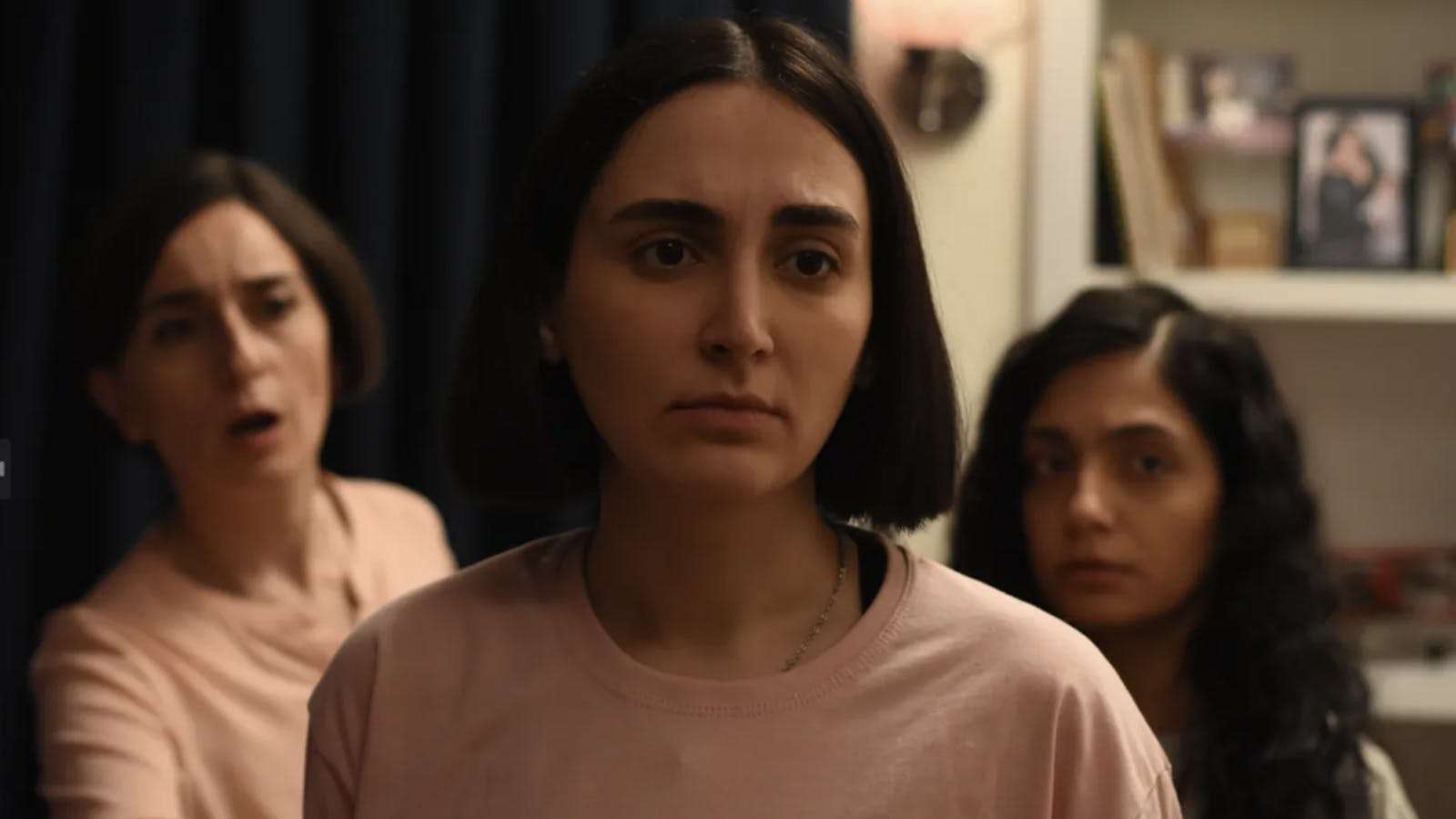
Rasoulouf’s film very much feels like a skewering on the pre-code Epic Hollywood films, especially the 1933 film “Cavalcade.” That film depicted the lives of well-to-do London residents and their close friends as important historical events like the Second Boer War, the sinking of the Titanic, and Queen Victoria’s death either directly affected the family or served as the background.
While films like “Cavalcade” and others of its kind don’t offer deep commentary on those events, Rasoulouf’s film takes a decidedly different approach, serving as a sharp critique. His choice is to highlight the dissolution of familial bonds within the supporters of the same regime that would force the director to flee from the theocracy and how the forced distance from the ground reality afforded by privilege does little to protect them.
The Challenge of the Status Quo overtly as well as infinitesimally
It is perhaps not a coincidence that the major chamber drama follows the lives of the three women in Iman’s absence and how the patriarch’s rules and regulations come under fire from within his family, his own headspace, and the world around him.
The overt challenge comes from Rezvan and Sana, who as the movie begins are already disillusioned due to the biased dissemination of information by the media and how social media becomes their only source of following along with the protests. Editor Andrew Bird also splices footage of the actual protests to hammer home the brutal reality of living under the theocracy. Once Rezvan’s friend Sadaf is attacked directly in the protests and later is arrested, it further leads to Rezvan and Sana’s disillusionment about their family, especially their father. It also leads to the most overt form of rebellion from Sana herself, the theft of her father’s gun.
The infinitesimal challenge on the other hand stems from Najmeh. If Iman is the stand-in for the regime with all its ideals and all its conformism, Najmeh is the devoted disciple. But as she finds her carefully curated life falling apart due to her husband’s inability to handle the responsibility of being a cavalier executioner and her daughters coming under fire once her husband’s fanaticism comes to the forefront, she too slowly starts to challenge the stamens of authority—offended at being interrogated, trying to protect her daughters by taking the blame on herself, or at the end refusing to sit, reminding her husband that “he had already done it all.”
But perhaps the most impactful challenge of the status quo is the inability of both Najmeh and Iman to understand the generational divide cropping up as well as the revolts rising as a result of oppression. This crops up in minute forms, with Iman unable to understand Sana’s interest in dyeing her hair or painting her nails, but perhaps the nail in the coffin is not in the overt moments of depiction of real-life footage, but rather in that central moment of Iman driving up beside a car driven by a woman with cropped hair and a tattoo on her neck, with a withering look afforded to Iman that only signals a nonchalant arrogance. No matter how much a regime tries to lock up or control, progress will find a way to move forward unencumbered.
The Genre shift in the final act
While the shift in the final act leads to Iman suffering from essentially a psychic break, governed by paranoia and an overwhelming sensation of unease and loss of control of his surroundings, the directorial choice to craft the entire denouement as a home invasion thriller feels deliberate in so far that genre filmmaking is perhaps a more impactful delivery mechanism for the commentary that Rasoulouf wanted to portray. It’s a separate discussion that the third act shift is a tad bit chaotic for its good.





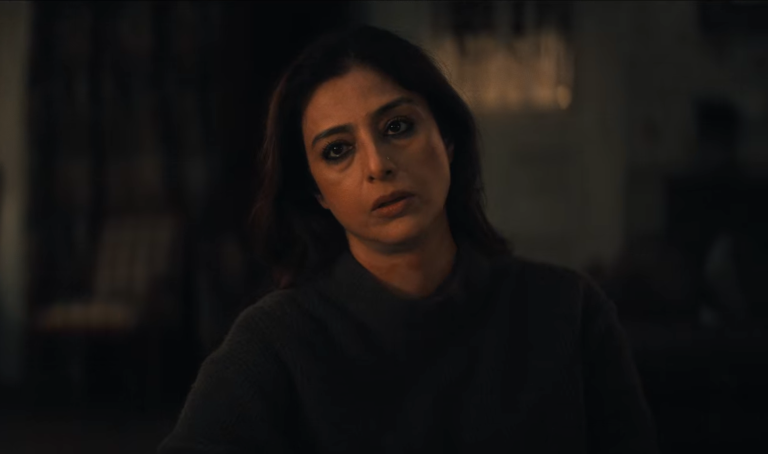
![Séance on a Wet Afternoon [1964] Review– A Visually Entrancing and Superbly Written Character Study](https://79468c92.delivery.rocketcdn.me/wp-content/uploads/2021/10/Seance-on-a-Wet-Afternoon-1964-768x432.jpg)
